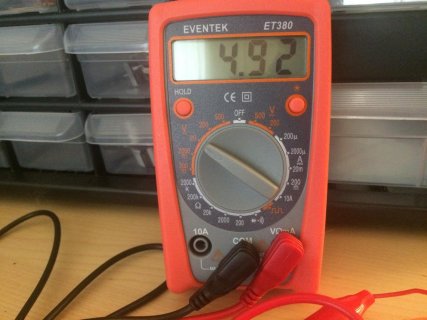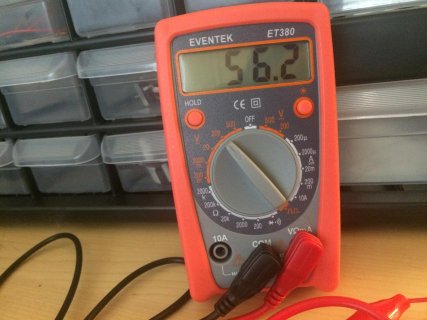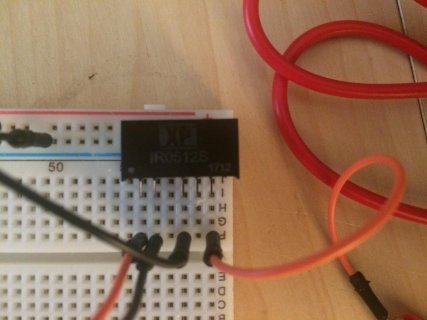Casey Edwards
Member
Hi, all! I'm hoping for a bit of guidance on what appears to be a basic misunderstanding on my part. The goal here is to use an IR0512S to convert +5v to +/-12v and then feed these into an op amp to send control voltage information to a synth. I have everything working on a 0 to 5v scale and wanted to be able to extend the voltages with only usb power to cover more range for CV control. A friend is doing this with the IR0512S, but for some reason I can't figure out what I'm doing wrong even though it seems our setups sound identical. Now onto the specifics of the problem:
On the Teensy 3.2 I'm using VUSB and GND for the + and - rails on the breadboard. It measures predictably around 5v.


When I feed this information into the IR0512S following the datasheet the output voltage is way higher than 12v! In the picture you'll notice the "common" pin is not connected to GND, but I did try that configuration with no success. I'm sure it will be needed in the final design, but for now I just want the output voltage from the IR0512S to read correctly.



Any thoughts on what I'm doing incorrectly would be greatly appreciated!
On the Teensy 3.2 I'm using VUSB and GND for the + and - rails on the breadboard. It measures predictably around 5v.


When I feed this information into the IR0512S following the datasheet the output voltage is way higher than 12v! In the picture you'll notice the "common" pin is not connected to GND, but I did try that configuration with no success. I'm sure it will be needed in the final design, but for now I just want the output voltage from the IR0512S to read correctly.



Any thoughts on what I'm doing incorrectly would be greatly appreciated!

